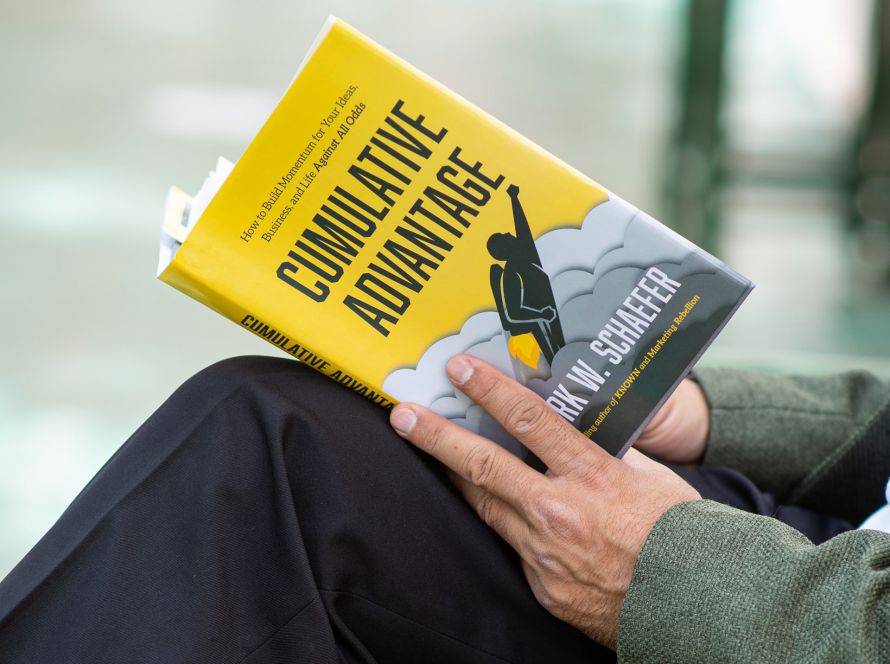Making A Love Connection
Are you struggling to connect with your loved ones and feel misunderstood in your relationships? Dr. Gary Chapman’s best-selling book, ‘The 5 Languages of Love,’ provides a roadmap to help you navigate the complexities of human connection and unlock the secrets to express and receive love effectively.
With over 11 million copies sold worldwide, ‘The 5 Languages of Love’ has become a renowned guide for building lasting and fulfilling relationships. Understanding and speaking your partner’s or loved one’s love language, can create deeper emotional bonds and foster intimacy.
In this article, we dive into the five love languages identified by Dr. Gary Chapman: words of affirmation, quality time, receiving gifts, acts of service, and physical touch. We explore how each love language is expressed, how to identify your primary love language, and how to communicate with those who have different love languages effectively.
Whether you’re in a romantic relationship, a parent looking to connect with your child, or simply seeking to enhance your interpersonal skills, ‘The 5 Languages of Love’ offers valuable insights and practical strategies for mastering the art of connection. Join us as we delve into this transformative book and discover how it can revolutionize your relationships.
Understanding the Concept of Love Languages
Love is a universal language, but the way we express and interpret love can vary greatly from person to person. Dr. Gary Chapman introduces the concept of love languages as a way to understand and bridge these differences. According to Chapman, each individual has a primary love language – a preferred way of giving and receiving love. By learning to speak the love language of our loved ones, we can effectively communicate our affection and build stronger connections.
The five love languages identified by Dr. Gary Chapman are words of affirmation, acts of service, receiving gifts, quality time, and physical touch. These languages represent different ways in which people express and experience love. Understanding these languages can help us navigate the complexities of relationships and bring about greater fulfillment and happiness.

The Five Love Languages Explained
- Words of Affirmation: This love language focuses on verbal expressions of love and appreciation. People whose primary love language is words of affirmation thrive on compliments, encouragement, and kind words. Simple phrases like “I love you,” “You’re doing a great job,” or “I appreciate you” carry great weight for individuals with this love language.
- Acts of Service: For those whose primary love language is acts of service, actions speak louder than words. These individuals feel loved when someone does something helpful or meaningful for them. Whether it’s cooking a meal, running errands, or completing a task, acts of service show love in practical ways.
- Receiving Gifts: This love language is not about materialism but rather the thoughtfulness and effort behind a gift. People with this love language value the sentiment and meaning behind the presents they receive. It’s not the cost or size of the gift that matters; it’s the thought and effort put into selecting or creating something special.
- Quality Time: Quality time is all about undivided attention and being fully present with your loved ones. People with this love language feel most loved when they have meaningful conversations, engage in activities together, or simply spend uninterrupted time with their loved ones. It’s about creating shared experiences and building emotional connections.
- Physical Touch: This love language centers around physical affection and touch. Holding hands, hugging, kissing, or even a gentle touch on the arm are all ways to express love for individuals with this primary love language. Physical touch promotes a sense of security, comfort, and intimacy.
Understanding the five love languages provides a framework for expressing love in a way that is meaningful to our partners and loved ones. While everyone may appreciate all five love languages to some extent, each person typically has a primary love language that resonates with them the most.
Discovering Your Love Language

Discovering your primary love language is essential for effectively expressing your needs and desires in relationships. Dr. Gary Chapman suggests several ways to identify your love language:
- Reflect on your past relationships: Consider the things that made you feel most loved and appreciated in past relationships. Were you touched by kind words, acts of service, receiving gifts, quality time, or physical touch?
- Observe how you express love: Take note of how you naturally express love to others. Are you more inclined to give compliments, perform acts of service, give meaningful gifts, spend quality time, or show physical affection?
- Consider what you request most often: When you ask your partner or loved ones for something, what do you typically ask for? Do you crave words of affirmation, help with tasks, meaningful gifts, undivided attention, or physical touch?
By reflecting on these questions and paying attention to your desires and preferences, you can start to unravel your primary love language.
The Importance of Knowing Your Partner’s Love Language
Understanding your love language is only part of the equation. Equally important is knowing the love language of your partner or loved ones. When we speak the same love language as our loved ones, we can effectively communicate our affection and deepen our emotional connection.
Knowing your partner’s love language allows you to tailor your expressions of love to their specific needs and desires. It shows that you care about their emotional well-being and are willing to go the extra mile to make them feel loved and appreciated. It also helps you avoid miscommunications and misunderstandings that can arise when two people have different love languages.
Applying the Love Languages in Relationships
Now that we have a good understanding of the five love languages and the importance of knowing our own and our partner’s love language, let’s explore how we can apply this knowledge to our relationships.
- Discovering your partner’s love language: Open and honest communication is key to uncovering your partner’s love language. Have a conversation with them about the concept of love languages and ask them how they feel most loved. Be attentive to their responses and observe their reactions to different expressions of love.
- Making a conscious effort: Once you have identified your partner’s love language, make a conscious effort to speak it regularly. This may involve adjusting your behavior and habits to prioritize their needs. For example, if their love language is acts of service, you can offer to help with household chores or take care of tasks they find burdensome.
- Being consistent: Consistency is crucial when speaking your partner’s love language. Make a habit of expressing love in their preferred way, even during busy or stressful times. Small gestures and consistent efforts can have a significant impact on the overall quality of your relationship.
- Learning from each other: While it’s important to speak your partner’s love language, it’s also essential to teach them how to speak yours. Share your love language with your partner and explain what makes you feel loved and appreciated. This mutual understanding can strengthen your bond and create a more harmonious relationship.
Overcoming Challenges in Using the Love Languages
While love languages can greatly enhance our relationships, they are not a magical solution to all relationship problems. Challenges can arise when two people have different love languages or when external factors put strain on the relationship. Here are some common challenges and how to overcome them:
- Different love languages: When you and your partner have different primary love languages, it’s important to find a balance and meet each other’s needs. Make an effort to learn and speak each other’s love languages, and be patient with each other’s differences. Remember that love is a journey of growth and understanding.
- External factors: Stress, busy schedules, and other life challenges can sometimes overshadow our efforts to speak each other’s love languages. During these times, it’s crucial to communicate openly, express empathy, and find small ways to prioritize your relationship and reconnect.
- Misinterpretation of love languages: Misinterpretation can occur when expressions of love are not aligned with the intended love language. For example, buying gifts for someone whose love language is quality time may result in misunderstanding and dissatisfaction. Regular communication and willingness to learn from each other can help avoid misinterpretations.
Remember that mastering the love languages is an ongoing process that requires effort, understanding, and adaptability. It’s about continuously learning and growing together as a couple or family unit.
Success Stories and Testimonials from Couples Who Have Used the Love Languages
The impact of love languages is best understood through the stories and experiences of those who have applied them in their relationships. Countless couples have reported significant improvements in their communication, emotional connection, and overall relationship satisfaction after implementing the love languages.
One couple, Sarah and John, had been married for several years but felt disconnected and unfulfilled in their relationship. Sarah’s primary love language was acts of service, while John’s was quality time. Once they discovered their love languages and started speaking each other’s languages, their relationship transformed. John began making a conscious effort to spend quality time with Sarah, engaging in activities they both enjoyed. In return, Sarah started performing small acts of service for John, such as preparing his favorite meals or taking care of household chores. The couple reported feeling closer than ever before and experienced a renewed sense of love and appreciation.
These success stories demonstrate the power of love languages in fostering deeper connections and resolving relationship challenges. Whether you’re in a long-term relationship or just starting a new one, incorporating the love languages can create a solid foundation for a fulfilling and lasting partnership.
Additional Resources and Tools for Mastering the Art of Connection

‘The 5 Languages of Love’ by Dr. Gary Chapman is an excellent starting point for understanding and applying the love languages in your relationships. However, there are also other resources and tools available to further enhance your mastery of the art of connection.
- Love Language Quiz: Take the official Love Language Quiz on Dr. Gary Chapman’s website to discover your primary love language and gain insights into your relationship dynamics.
- The Love Language Journal: This companion journal to ‘The 5 Languages of Love’ provides prompts and exercises to help you deepen your understanding of the love languages and apply them in your everyday life.
- Couples Therapy: If you’re facing significant relationship challenges or struggling to effectively communicate through love languages, seeking the guidance of a couples therapist can be beneficial. A trained professional can provide personalized strategies and support tailored to your specific needs.
Conclusion and Final Thoughts on “The 5 Languages of Love”
Dr. Gary Chapman’s best-selling book, ‘The 5 Languages of Love.’ Offers valuable insights and practical strategies for mastering the art of connection. By understanding and speaking the love language of your partner or loved ones. You can create deeper emotional bonds, foster intimacy, and build lasting and fulfilling relationships.
Understanding the concept of love languages and identifying your primary love language. Is the first step towards effective communication and connection. By actively applying the love languages in your relationships, you can overcome challenges. Create a stronger emotional connection, and experience greater satisfaction and happiness.
Remember that the love languages are not a one-size-fits-all solution, but rather a framework for understanding and expressing love. Each person’s love language is unique, and it’s important to continuously learn, adapt, and grow together as you navigate the complexities of human connection.
So, see what you think of ‘The 5 Languages of Love’ and take the transformation for deeper connections. Your relationships will thank you for it.















































































































